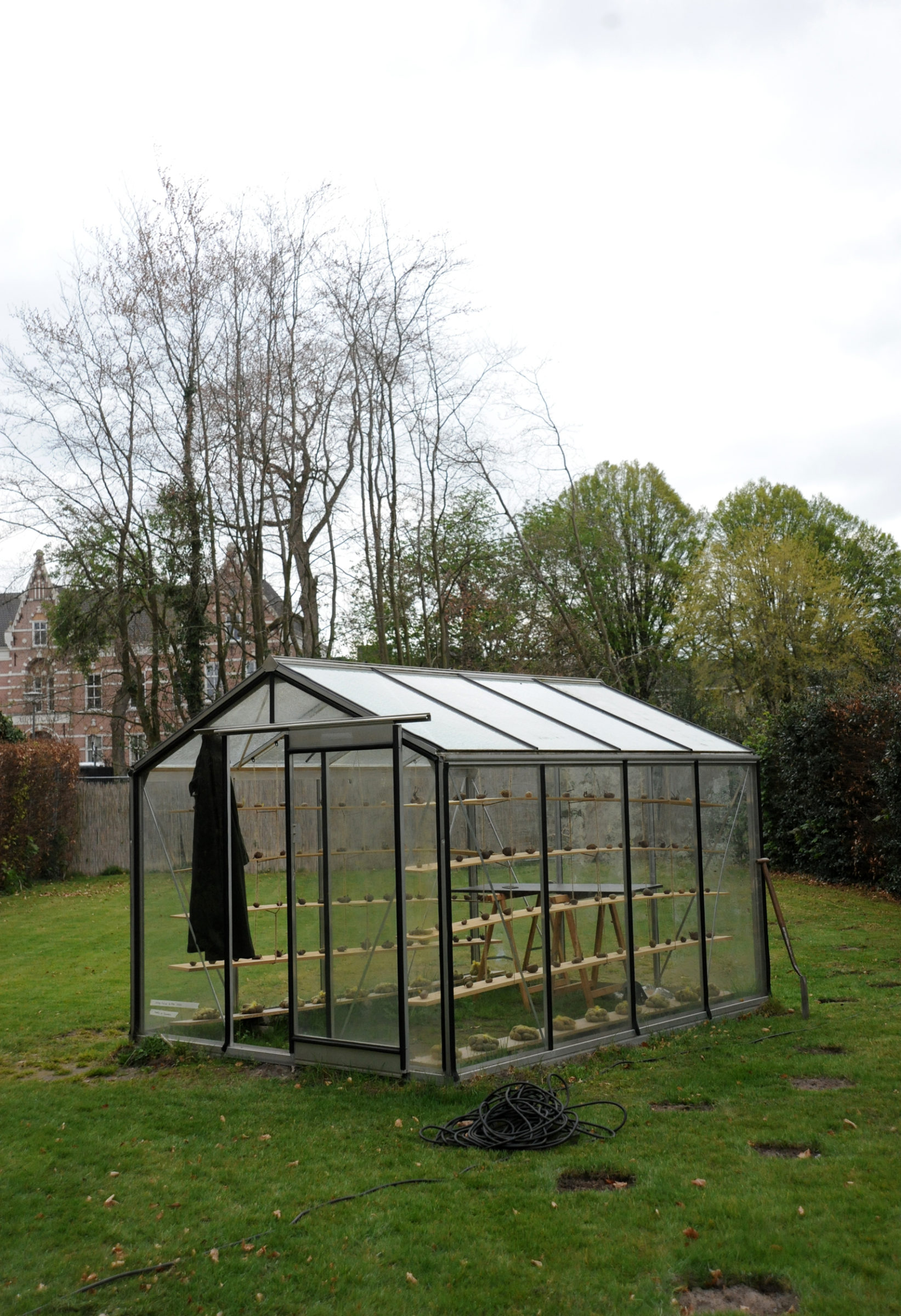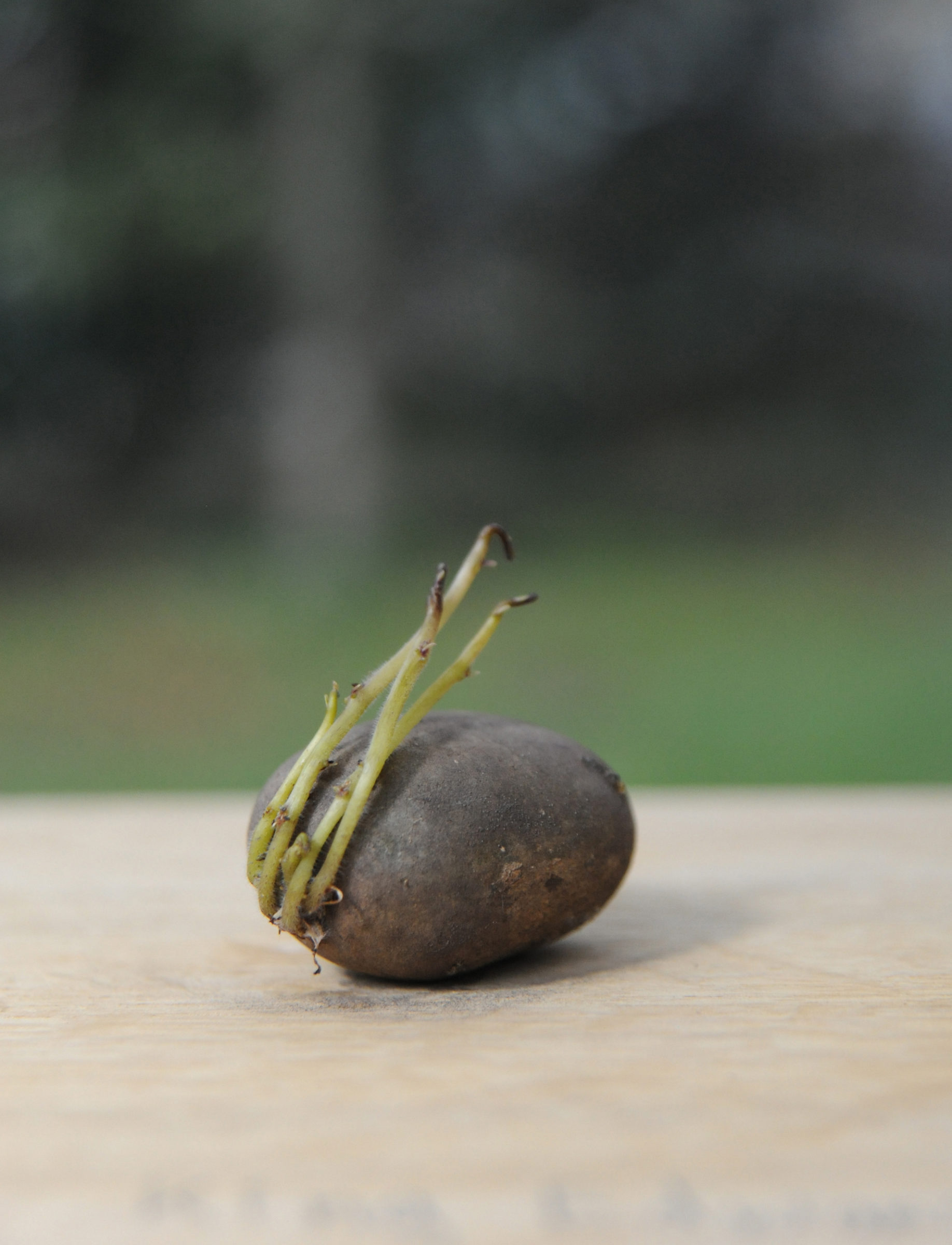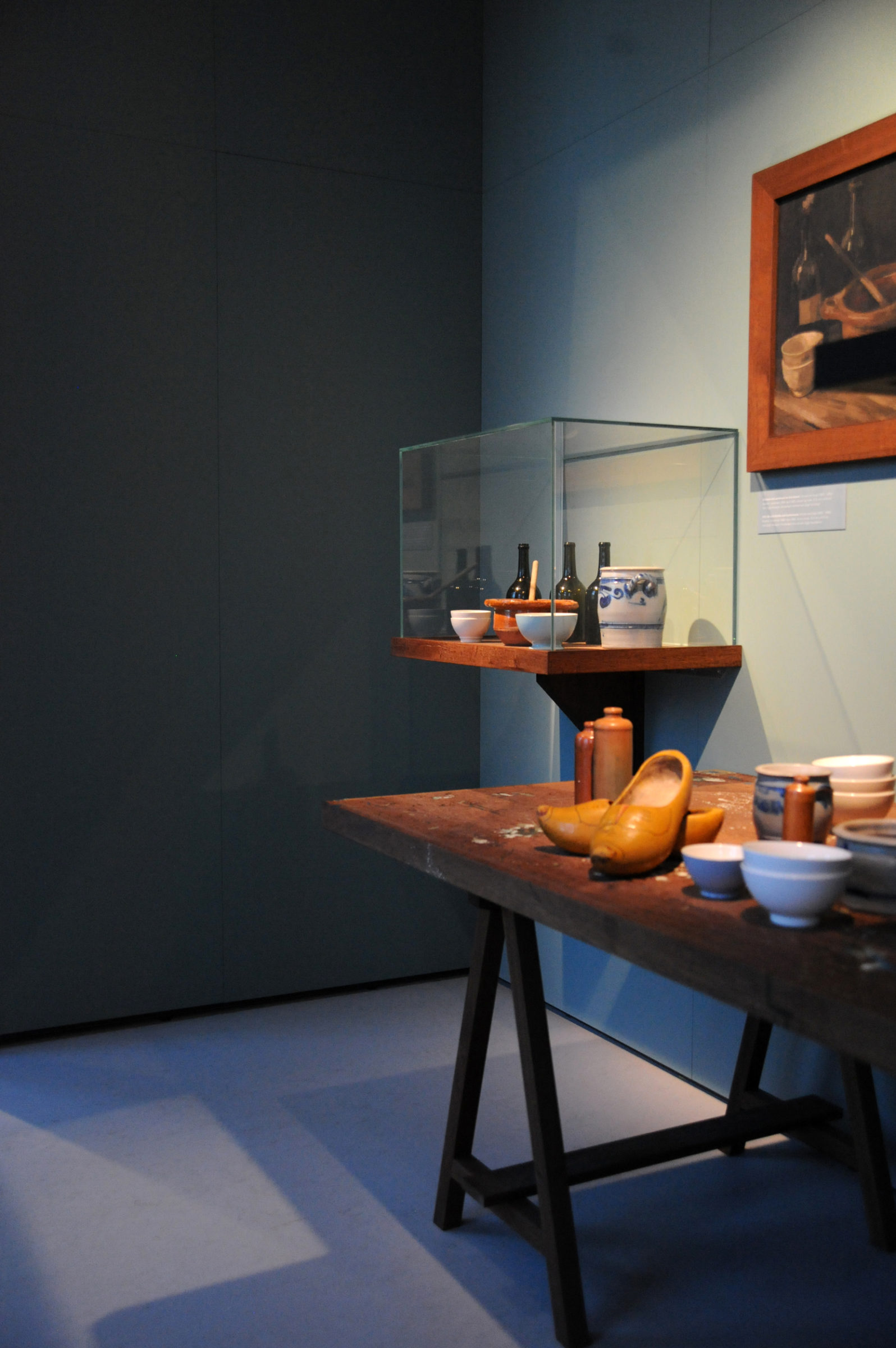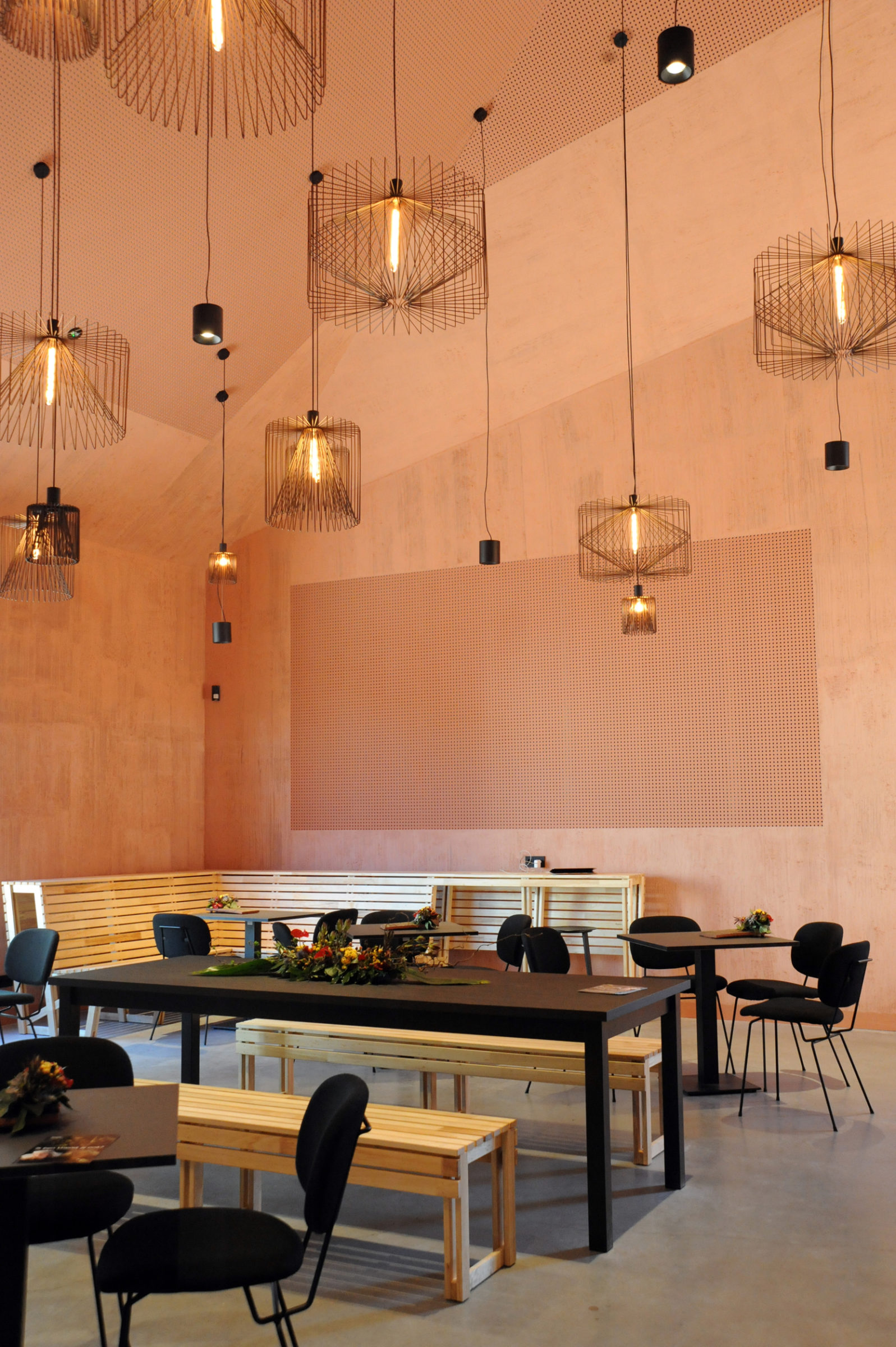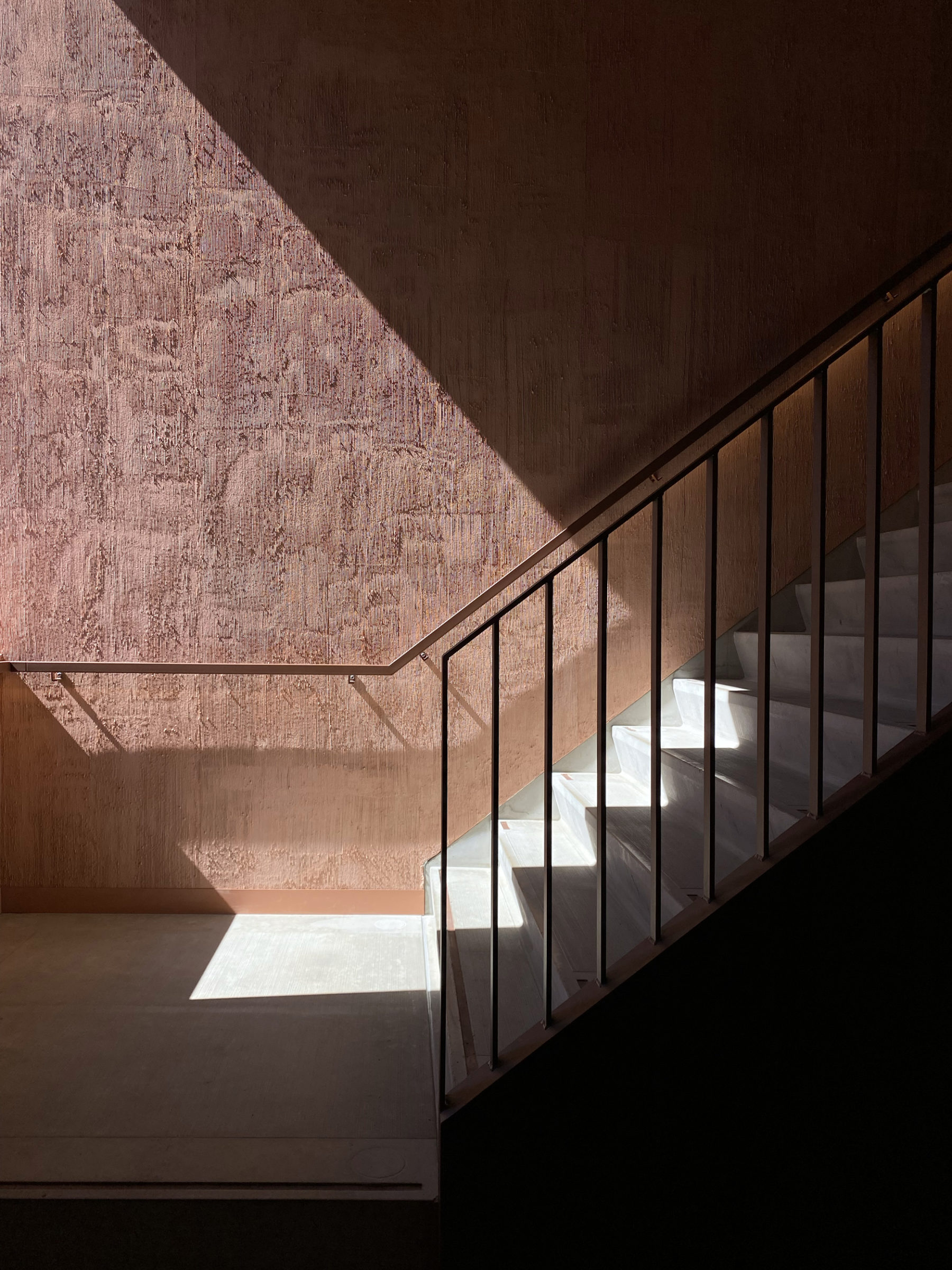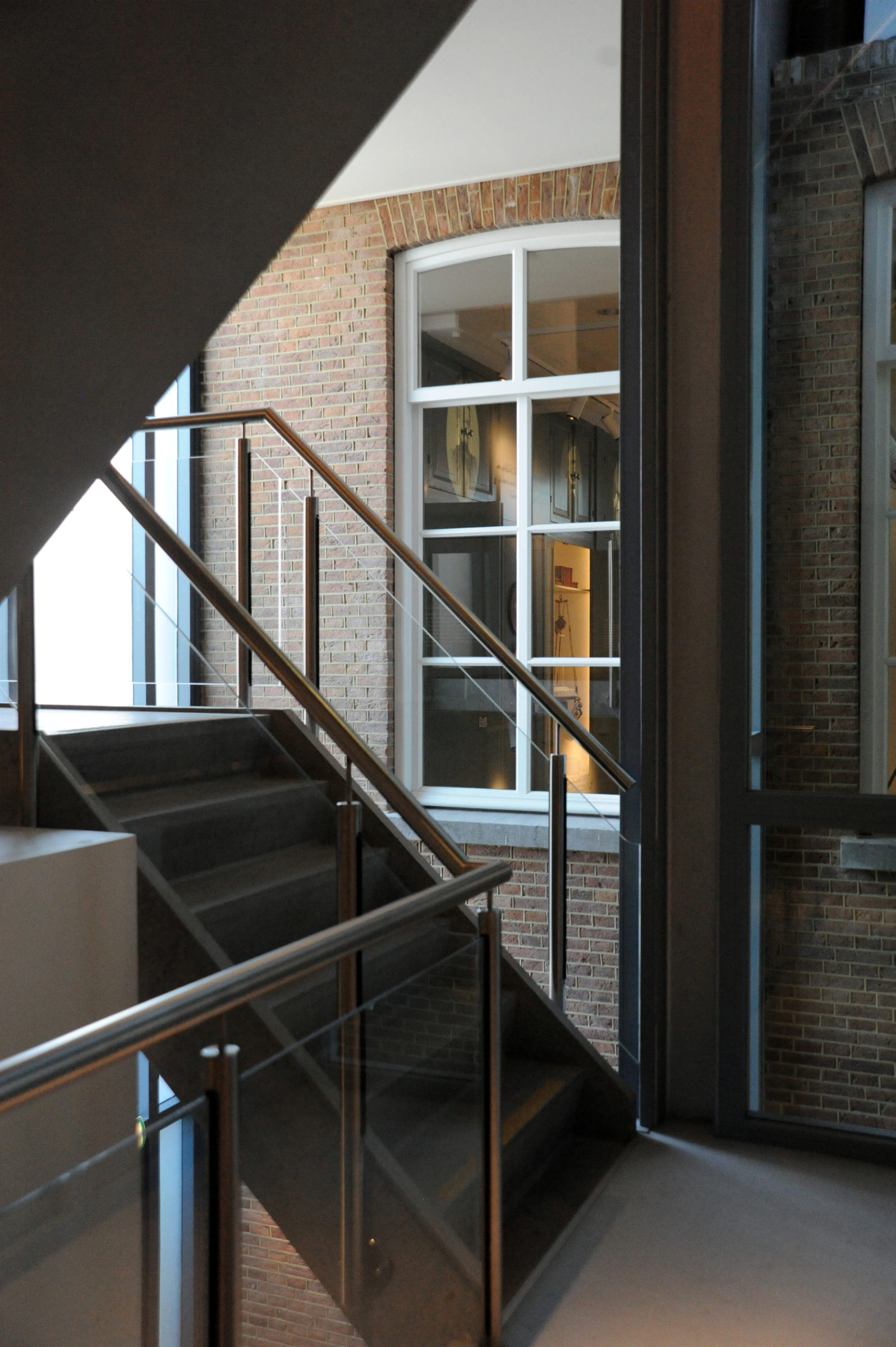I took the overnight ferry to visit the Brabant region of the Netherlands to find out more about Van Gogh’s love of the land and his fascination with the people who worked it, and to produce an article for The Country Smallholder magazine. I’m sharing the full story below, but if you’d like to read it in print you can pick up a copy of the magazine here.
In the garden of the house where Vincent van Gogh was born – the house now long gone, and one dead tree remaining from his mother’s hopes of recreating the splendour of the gardens of Versailles – a patchwork of missing turf squares leads the way to a small greenhouse. Hopscotching to the end of the garden I’m met by artist Noortje de Brouwer; dark hair piled high with tendrils, like roots, tumbling down, eyes bright and clear for the planting of potatoes. 146 varieties, to be exact.
As a child Van Gogh discovered his love for nature in this very garden, and in response to this, and his later suggestion to his brother Theo to read the book ‘Voyage Autour de Mon Jardin’ by Alphonse Karr, de Brouwer is here, inviting people to gather in the garden, plant potatoes, and together, watch them grow.
There’s something special about this process, and the impact that Van Gogh still has, a kind of legacy. Not to mimic his work, or make modern day versions of it, but to take his love for the land, for the people (and the potatoes) and create something for the future that brings together like-minded people, helps others understand where their food comes from, and even addresses issues such as food scarcity and potential environmental impacts.
I’ve heard it said before, that if we discovered potatoes now we wouldn’t even consider them as pig feed, let alone for human consumption. That’s harsh – they are full of fibre, vitamins, antioxidants, and, might I add, artistic promise.
In Nuenen, a village in the Brabant area, where his father was a preacher, Van Gogh painted his first masterpiece, The Potato Eaters (or in Dutch, De Aardappeleters). Walking down the road from the newly opened Van Gogh Village Museum, there’s a real sense that 30-year-old Vincent would have taken those exact same steps 140 years ago. To the fields to sketch, to the post office to send a letter to his brother, or to the protestant chapel, which he painted in 1884 as a gift to his bed-bound mother who had broken her thigh and was distraught at not being able to get to the church. Returning along the lane at the side of the Vicarage, where Vincent had stayed for 18 months, painting in the old wash house, turned studio, at the back of the building, still there.
Past the pollarded willows, lining the roadside in front of Opwetten Watermill, which he painted in 1884, and where he’d walked out to the fields to observe the hardworking people, past the thatched ‘birds nest houses’ as he called them, to this land of weavers and small holdings. Van Gogh was fascinated by the way in which people lived with and worked the land, writing in one of his letters, ‘The hands they eat their potatoes with are the same hands that have pulled them out of the ground.’
In Noord Brabants Museum, in the beautiful city of Den Bosch, you’ll find the painting from November 1885 of the Vicarage at Nuenen at Night, depicting the washhouse studio. Amongst their collection of 12 original Van Gogh’s, and many personal artefacts, there are also studies made for The Potato Eaters – portraits where you can see Van Gogh’s desire to show the impact of hard work and graft on the face of his model, brush strokes sweeping like the wind across the fields.
Van Gogh had no interest in the high-society, he cared for the people of the land, people who he felt had earned their food in return for the hard work they’d put in. His heart was embedded in the landscape, planted like a potato in the rich soil.
Next time you cook or eat a potato, know that you are participating in a potentially artistic activity – or at least, Van Gogh might have considered it that way!
Visit the Brabant region of the Netherlands – travel across the land, walking in Van Gogh’s footsteps, through the villages and fields he frequented.
How to get there: We took the overnight ferry from Harwich to the Hook of Holland, and then used trains and public transport to get around in the Netherlands. It is also possible to drive, or cycle – there are 46 Van Gogh monuments connected by 435km of cycle paths across the region!
Van Gogh National Park – a new project covering the complete area where Van Gogh worked, investing in rewilding and reconnecting the landscape and cultural heritage. hollandnationalparks.com/en/parks/van-gogh-national-park
Van Gogh Village Museum in Nuenen – Telling the story of Vincent van Gogh’s personal and artistic development in Nuenen. Wander the streets, see what he saw, and follow in his footsteps. vangoghbrabant.com/en/home/nuenen
The Water Mill in Opwetten – stop off for lunch or dinner, enjoy the countryside views, and immerse yourself in the setting of one of Van Goghs earliest oil paintings. dewatermolenvanopwetten.nl
Noord Brabants Museum in Den Bosch – a fantastic city to explore, this is also an exceptional museum with world-class exhibitions. In the permanent collection are 12 original works by Van Gogh as well as personal documents. hetnoordbrabantsmuseum.nl
Van Gogh Church in Etten-Leur – This town, where Van Gogh started his artistic career has multiple sites associated with him, including the church. vangoghbrabant.com/en/home/etten-leur
Vincent van Gogh House in Zundert – the site of Van Gogh’s birthplace house. Visit the garden he played in, and pop round the corner to the chapel where his father preached. vangoghhuis.com (and make sure to eat at Bij de Nonnen which your there!)
Find everything else you need to know about Van Gogh in Brabant here vangoghbrabant.com
I was a guest of, and travelled with, Visit Netherlands, along with a small group of lovely journalists. As always, my opinions are my own (and my ability to hunt out a potato, a talent I was born with!)
If you’d like to keep up with what I’m up to work-wise (talks, events, exhibitions, that kind of stuff), you can find my Agenda on my website. And, if you’d like occasional updates about all sorts of other nice things, in your inbox, you can join my mailing list here.



